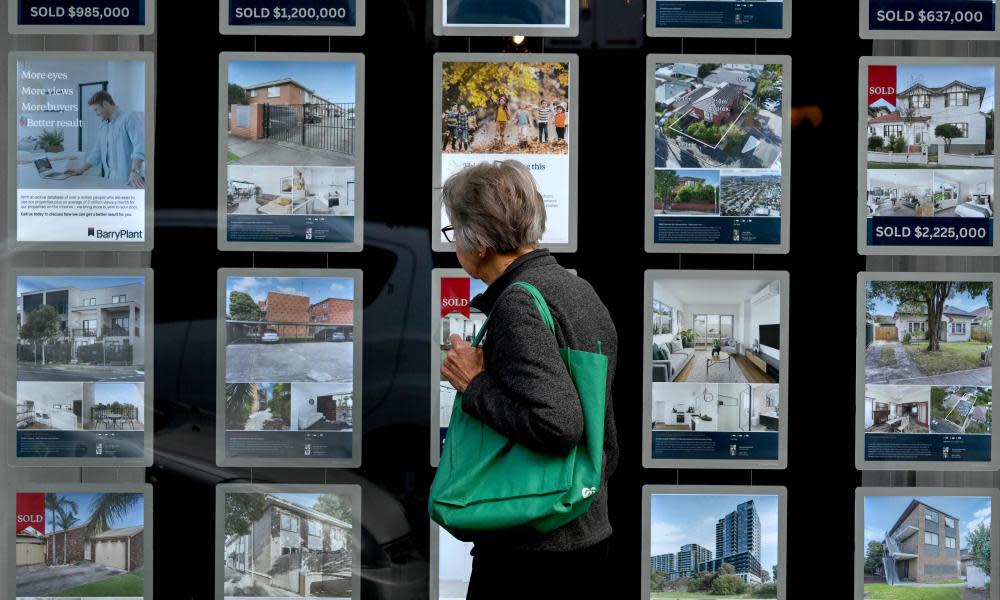Political point scoring over latest RBA rate rise won’t help those feeling the ‘painful squeeze’

The Reserve Bank is all about “seeking to keep the economy on an even keel” as it cranks up interest rates to crush inflation – but the effect of multiple rate rises is anything but even.
The central bank again surprised most economists and investors on Tuesday by hiking its cash rate another 25 basis points to 4.1%.
The decision sparked an inevitable blame game.
It was “Labor’s rate rise”, Angus Taylor, the shadow treasurer, declared. Jim Chalmers said it wasn’t the budget’s fault. The ACTU blamed profit gouging by big business – but the Australian Chamber of Commerce and Industry returned the serve, saying last week’s national wage increase meant the rate rise was “brought to you by the ACTU”.
The governor, Philip Lowe, will probably adjudicate the blame game – at least the RBA’s assessment of it – when he speaks at a bank summit in Sydney on Wednesday. That should quell some of the pointless point scoring.
The basic challenge, though, is that demand in the economy remains too strong for the RBA’s liking and, so long as that’s the case, it will keep lifting the cost of debt. Because the public won’t oblige by cutting spending evenly, the burden will unfortunately fall harder on some.
About two-thirds of the population are not mortgage-holders, making them largely insensitive to interest rates other than watching how much deposit rates increase. Many of those with a loan to pay salted away cash during the Covid years or paid down debt.
That’s why household consumption was singled out in Lowe’s 577-word commentary on Tuesday as “a significant source of uncertainty”. (After tomorrow, we won’t get a better sense of the bank’s thinking until it releases the full minutes of Tuesday’s decision on 20 June.)
Lowe addressed that uneven impact in the same paragraph.
“The combination of higher interest rates and cost-of-living pressures is leading to a substantial slowing in household spending,” he said.
Reinforcing the mixed impact, Lowe went on: “Housing prices are rising again and some households have substantial savings buffers, although others are experiencing a painful squeeze on their finances.”
Housing looks likely to be of a growing concern – and not just for those hunting for affordable accommodation. There’s also the RBA’s calculus of how high rates must go to choke inflation.
Sure, the consumer price index only tracks the cost of building new homes, but the bank will be noting property prices picked up 1.2% nationally last month.
Sydney, where the median home sells for about $1m, saw prices jump 1.8%, or the most since October 2021, data group CoreLogic said.
Rising prices boost the wealth effect of homeowners, making them more likely to spend.
The rental story, though, may be more of a worry for Lowe and the board.
As the board noted in minutes for the May rate rise: “rent inflation was expected to continue to pick up over the coming year or so and add materially to inflation over the forecast period, including because of the recent increase in net overseas migration”.
Related: Will one more interest rate rise slay inflation? | Fiona Katauskas
In May, rents were up 0.8% on average on the previous month, bringing the annual increase to 9.9%, CoreLogic said. Already the most expensive city for rentals, Sydney clocked up a 1.9% increase in April, eclipsing Melbourne’s 1.7% rise and Perth’s 1.6%.
For those trying to rent in the harbour city, the record high annual of 19.1% means tenants are paying about $5,500 more a year.
“With the exception of Hobart and Canberra, vacancy rates across the majority of our capital cities remain near record lows and total advertised rental supply is almost 40% below the five-year average,” CoreLogic said.
It’s true that the underlying inflation rate that the RBA watches most closely strips out more volatile movers.
Still, it’s getting harder to see how rents can come down – and wages can go up – by lifting rates.
A sunken ship can also achieve an even keel.

 Yahoo News
Yahoo News 
